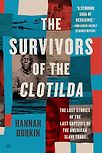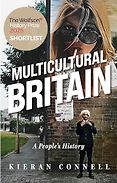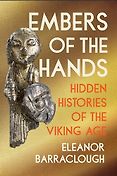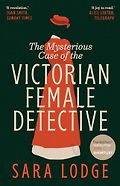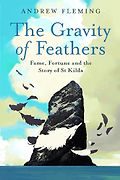Before we get on to the books, perhaps you could tell us what you’re looking for in the Wolfson History Prize. What do all the books we’re going to discuss achieve collectively?
The basic rule is that we’re looking for something which is a good read, but also really well researched. A book can be a fantastic read, but if we’ve got no idea where the source material is, that’s not going to be a winner. You need to have both. It’s obviously great if it’s also got some source material that no one’s used before, but you can’t always have that. So it’s a question of what you do with the sources.
Lots of us who read history focus on a particular historical period, and we don’t necessarily read much outside that period, but we’re looking for books where, no matter what period you specialise in, you’re going to think, ‘that’s gripping.’ We were remarkably unanimous in the six we chose. In the final stages, it wasn’t like we all had six different books and somehow some won and some lost. There was lots of overlap.
We also wanted a list that shows the range of good history writing, so different types of books—narrative history and biography, more episodic history, modern and older. I think the strength of British history writing comes across really, really well.
Let’s kick off with Embers of the Hands: Hidden Histories of the Viking Age by Eleanor Barraclough.
This one is interesting because it’s not a narrative history. It’s much more thematic. She uses material culture, the archaeology of individual objects, and goes into the individual lives reflected in those objects, but then comes out to revisit the big picture. It’s very cleverly done. It’s beautifully written. There’s lots of gentle humour in it. My favourite bit was actually talking about the archaeology of fabric production, where she says something like ‘without women to make the clothing and to make the sails, the Vikings would just be some naked men in a rowing boat.’ I loved that.
She’s very interested in the whole range of people’s lives. She takes objects, some of them quite well known, like the Isle of Lewis chess set, which we probably all could recognize, from around 1200 AD. She goes from objects like that, or large carving – big, monumental stuff – to look at really tiny things, like a discarded mitten made of bits of old fabric, a chopping board decorated with carved walrus heads. These are the sorts of intimate detail of the past, which tell us a lot.
We don’t know the big story of the Viking age as well as we might think, but we do have all these tiny bits and pieces, and she puts those together in a very compelling way. She’s got ‘Big History’ points too. So she talks about what an ‘age’ is. She talks about the Viking Age and how it doesn’t really work like that, as history overlaps all the time.
But the focus remains on those personal stories, and that’s really strong. We get these little glimpses of what someone might have believed or thought, or what their life might have been like, and that tells you so much more about the Vikings than we knew before.
Next up is The Eagle and the Hart: the Tragedy of Richard II and Henry IV by Helen Castor. This is a very well-trodden period of history. What does this book add to it?
Yes, it is well trodden. And, in some ways, this is a thoroughly traditional narrative history of kings, of the most important people in society, very unlike the book by Barraclough, which is about the individual details of normal people’s lives.
What Castor has done here is take on the big theme of personality and power. Richard II, the legitimate heir, thinks that what is important is having that legitimacy versus his cousin Henry IV, who is the same age as him, but in a different position in the line of succession. Henry is much more about action, and that’s where it becomes fascinating because, once you start to think of Richard as the rightful heir, then it’s all about being the king, but less about doing what kings should do. By contrast, Henry is not the rightful heir, but what he does is absolutely brilliant, even though it includes regicide. That starts to make you think about what power is and how you get it and hold on to it. That big theme, which is highly relevant to modern politics, really holds the book.
It’s also excellent on detail. We have fantastically rich source material for this period, including things like the records of the Royal Wardrobe, so we know what colours the king would be wearing, what clothes were bought for particular seasons of the year. Those sorts of details, to me, take it beyond a traditional history into something far more interesting and personal.
Masculinity is another huge theme. Castor points out that at the coronation ceremony for Henry in 1399, the Archbishop of Canterbury preached on a passage from the Old Testament, “a man shall rule over the people.” Castor picks that up to think about what masculinity is in this period.
So there are some quite modern themes: the nature of power, what it is to be a real man. These are brought out through this historical period, which, as you say, in general we know much better than some of the other periods we’re looking at in these books.
What is the tragedy that she draws out? Is it the point about Richard being the rightful king, but not a very good one, and Henry being the illegitimate king, but who would have been quite a good one if he had been legitimate?
Yes, it’s how those two have to somehow be pitted against each other, because that’s the way that kingship works. You can only have one king at a time! If it had been the other way round, if Henry had been the legitimate heir, what might history have looked like? What might the state of the British people have been at the end of this? Because it’s a very tumultuous period with Wat Tyler and the Peasants’ Revolt and the Tower of London being taken. It’s not a smooth-running period of history at all. Castor asks what things would have looked like if we hadn’t had this struggle between these two men.
Next up is The Mysterious Case of the Victorian Female Detective by Sara Lodge.
This is a really interesting book, bringing together history and fiction in a way which I found fascinating. Sara Lodge explores fictional women detectives and the reality of what women were doing in the police force and beyond in the period from the 1840s onwards. She finds the overlap between the two. But what she brings out is the roles of women within detective work, outside fiction, the reality of women’s lives, particularly lower-class women who were used by the police in roles like searching women suspects, but who were also being used because women were quite difficult to see. Women could hide better in many ways; no one noticed them, so they could observe. They could gather evidence.
This all becomes a social history story which looks at things like the rise of new forms of public transport. Once there are buses that people can get on, you can use those as getaway vehicles. There are issues about whether people were paying their fares or not, and women could observe. They could count how many people were on the bus. They could look at the evidence for the money that was being brought in and see if it matched.
The evidence base is great because it includes the letters and the notes written by female detectives to those who were employing them. These women are overwhelmingly from the lower class. The myth of the woman detective in fiction is that she’s an upper-class woman, but the reality of women working with the police force was not that at all.
Quite often the wives of policemen were employed, weren’t they?
Exactly. Women couldn’t be policemen, but they were wives of policemen, and they would be used by those policemen as detectives. It’s fascinating. I particularly like the combination of the fiction and the myth with the reality; it’s so well handled throughout this book. The novels with female detectives only come out after the Matrimonial Causes Act, which moved divorce to the civil courts. Suddenly, women were in a different position because of divorce being a civil matter. The first novels that open this book were written in 1864; they increased awareness of female detectives, and they also encouraged women to think that they could have that role. Fiction and reality, and the relation between them, is a very strong theme in this book.
So after that period, did you get a rise in the social standing of female detectives?
After the novels started to be published, people became aware that women could play these roles. I think that’s important. There’s a wonderful map she has of London which shows how close actual detective agencies were to the periodical publishers who published these stories of women detectives; they were actually in the same parts of London. They knew each other. The sense of geography, the sense of place, is really, really strong in this book.
Let’s move on to Survivors: Lost Stories of the Last Captives of the Atlantic Slave Trade by Hannah Durkin.
This is an extraordinary story. It’s based on the last slave ship to go to America, Clotilda, and it had 110 enslaved Africans on it. This was in 1860 and they arrived in America, in Alabama, on the eve of the Civil War. The horrors of being transported across the Atlantic are something we know a lot about. But this is different, because when they arrived in Alabama, they were quickly dispersed. The boat had been funded by people in Alabama who wanted more slave labour, and this is the point exactly when the Civil War is about to break out, and the people disappear across Alabama.
And because it’s 1860, they lived into the modern era. The last survivor only died in 1940 and that was Matilda, who was only two years old when she was transported from Africa. It’s very poignant. It’s not just about the 110 who were transported, or those who survived the journey; it also looks at their descendants. It goes right up to the civil rights movement; it’s a long story. The survivors, the children, their grandchildren, and the individual stories of these people can be captured from interviews in their lifetime, from memories. There are biographies, there are also lots of newspaper accounts and she brings all that together.
You see not only the horror of the slave trade, but the strength with which these people retained their culture and the way in which they made new lives. One of my favourite sections, because I’m into fabric, is on the Gee’s Bend community, which did traditional quilting based on what they had done in Africa. This became an art form in its own right at Gee’s Bend. The quilts were traditionally made from old clothing, so they had the memory of the people who’d worn those clothes bound up in the quilt itself. That is an image for the book, that the memories of all these individual people who were brought over on the Clotilda come together to give you a picture of American history and the changing attitudes to slaves and to enslavement, and indeed the way that slavery went on, even though it was supposedly brought to an end. It’s a very strong, very vivid story.
Next up is The Gravity of Feathers: Fame, Fortune, and the Story of St Kilda by Andrew Fleming. What story does this one tell?
This is an extraordinary book, too. It’s about the island of St Kilda, highly remote, to the west of the Hebrides and famously evacuated in the 1930s. There’s an extraordinary movie about this made by Michael Powell, called The Edge of the World, which was released in 1937. He made it on another one of the islands, but it tells the story of those last people to live there. It’s an interesting story, because it was quite secretive. At the time of the evacuation of the people from the island, the Scottish Office, who were responsible for it, tried not to allow filming. But there was somebody who filmed on the island just before the evacuation in 1930, so we do have images of what it was like then.
There was an extraordinarily ‘simple’ culture. Andrew Fleming calls it the most mythologized community in Britain, because there’s something there about how we make a story about people who are not like us. So do you regard the people of St Kilda as a model of what we should all be like, with a very ‘simple’ lifestyle? Or do you see them as somehow quite ‘backward’, not like us at all, and they should be more like us, they should get into the modern world? It’s a bit of Britain that somehow stood apart from what was happening in the rest of the country, and became a semi-mythical place. This book shows the reality of life on St Kilda, and does it through people’s stories, through early photography, through some of the things we know about how their way of life worked. It was a very, very complex place in many ways, because, yes, it’s a ‘simple’ life, but how do you understand that and how do you account for what went wrong? And would it be possible to have a group living like this in the modern age? It was a very small community.
This is a very deep history book about a very small group of people. It asks us questions about how we regard other people, and not just other people who live in other parts of the world, but how we regard a group of people living in Britain in the 20th century, who are in some ways not part of Britain in the 20th century at all.
What led to them finally leaving for good?
There were lots of issues about disease, but in the end, the population just wasn’t sustainable. It got so small, it had to go. That is still disputed. It’s an interesting topic.
Finally, the last book on this year’s shortlist is Multicultural Britain: A People’s History by Kieran Connell. Tell us about this one.
This is very timely because Kieran Connell looks at four communities in Britain, not London, because London is just different. He produces what he calls a bottom-up account of those four communities and how they dealt with racial change through immigration. It’s timely because the narrative of white victimhood is something he looks at a lot, the idea that somehow, when an immigrant community is attacked, it’s because white people aren’t getting what they deserve. He really challenges that brilliantly.
It’s a different sort of book, because a lot is based on his own experience. He focuses on four communities: Cardiff, Nottingham, Balsall Heath, and Bradford. He himself grew up in Balsall Heath, in a multicultural community. He’s asking questions about what multiculturalism really is, and he focuses on particular themes for those four communities, many of them around sex and marriage, particularly interracial marriage, which was one of the big flare points for violence. But he also looks at things like education. That’s what he focuses on in Bradford. These are very topical subjects, and he has this great source base in memoirs and his own memory, but also a photographic archive from Balsall Heath, which shows ordinary people just sitting around on the street. It’s a very clever use of the photographic archive, I think.
He makes you think about immigration differently. When he tells the story of Bradford in the 1970s, he looks at the way that schools were populated. Some pupils were bussed to different schools in order not to ‘overrun’ one school with black children. He thinks about what that means, because on one level, it means that they won’t be able to join in after-school activities, because they’ll all have been bussed home again. They’re not going to be able to integrate because they’re no longer on the school premises. But he also thinks about how seeing buses full of black kids travelling across the town played into the narrative that the town was being overrun by black people, because people in predominantly white areas will see these buses going through and start to get panicky. It’s the unintended consequences of an attempt to integrate communities that may actually divide those communities. I thought that was a very interesting way of looking at it, and I like the fact that it’s very personal.
He talks about going to see his gran when he was a child, going out on day trips and then returning to these communities, staying there, and he talks about what happened to him when he was doing the research. So it’s got a lot of personal, anecdotal material, which is woven really well into the bigger sociological questions about immigration.
It’s not the historian’s job necessarily to do this, but does he sort of have a positive or negative overall view on whether things have ‘worked’ or not in terms of integration?
One of his themes is that British racism persists, but it shifts in terms of whether it’s individual racism or whether it’s structural racism. He’s not optimistic about the policies that have been used, but he is optimistic about individual people and their communities and communities working together, friendships across racial boundaries, and just generally letting it happen rather than trying to manage it. So I think, overall, there is optimism there. But exposing the particular stories of these four communities does illuminate a lot of the big questions.
The winner of the 2025 Wolfson History Prize will be announced on December 2nd.
Interview by Benedict King
November 28, 2025. Updated: December 12, 2025
Five Books aims to keep its book recommendations and interviews up to date. If you are the interviewee and would like to update your choice of books (or even just what you say about them) please email us at [email protected]
Five Books interviews are expensive to produce. If you've enjoyed this interview, please support us by donating a small amount.

